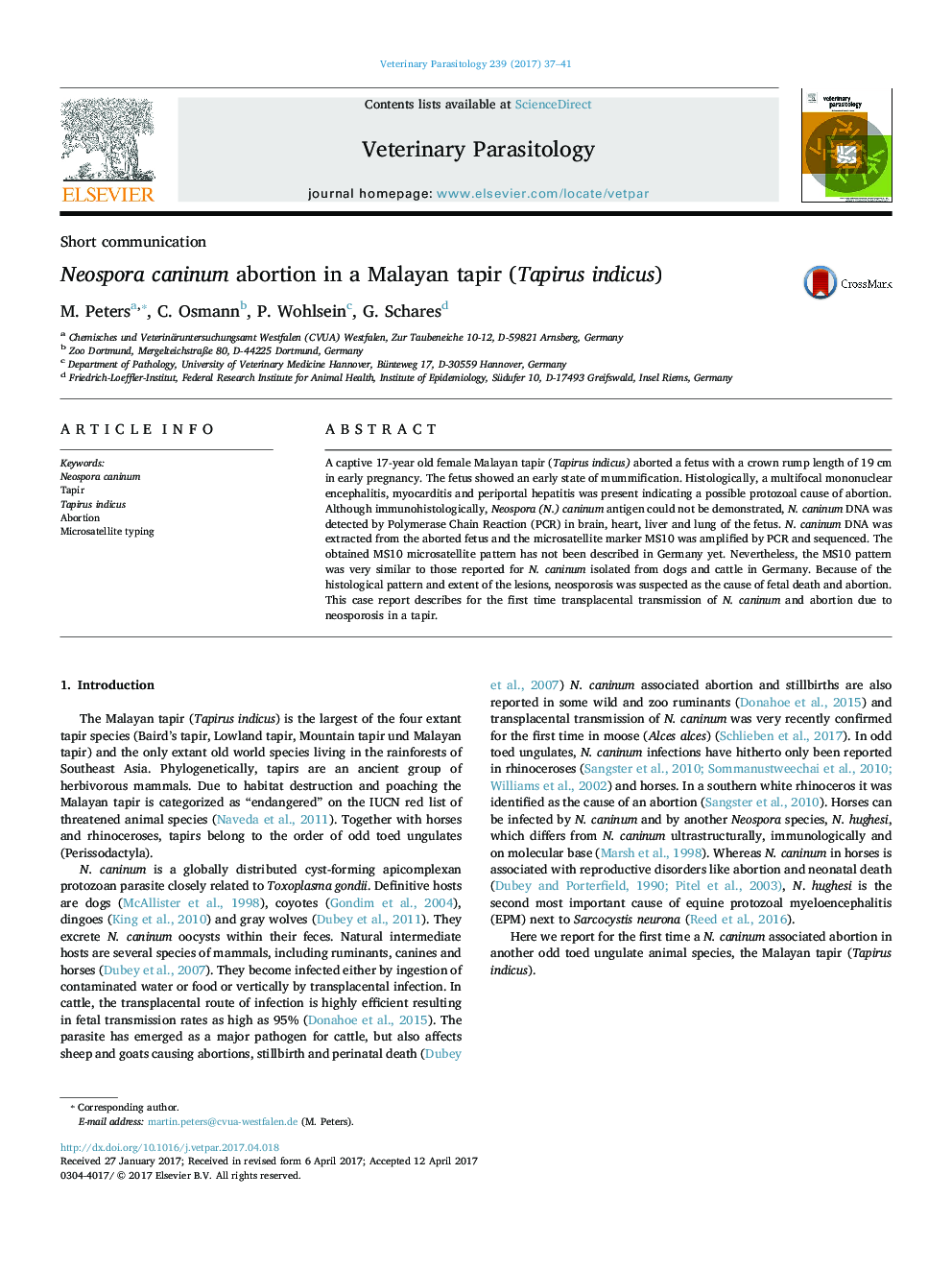| Article ID | Journal | Published Year | Pages | File Type |
|---|---|---|---|---|
| 5545783 | Veterinary Parasitology | 2017 | 5 Pages |
â¢The Malayan Tapir (Tapirus indicus) can be infected by Neospora (N.) caninum as an intermediate host.â¢N. caninum infection can be transmitted transplacentally in the Malayan Tapir.â¢Histological lesions in the aborted tapir fetus are a strong indication that neosporosis was the cause of abortion.â¢Analysis of the MS10 microsatellite marker revealed a unique pattern compared to other N. caninum strains in Germany.
A captive 17-year old female Malayan tapir (Tapirus indicus) aborted a fetus with a crown rump length of 19Â cm in early pregnancy. The fetus showed an early state of mummification. Histologically, a multifocal mononuclear encephalitis, myocarditis and periportal hepatitis was present indicating a possible protozoal cause of abortion. Although immunohistologically, Neospora (N.) caninum antigen could not be demonstrated, N. caninum DNA was detected by Polymerase Chain Reaction (PCR) in brain, heart, liver and lung of the fetus. N. caninum DNA was extracted from the aborted fetus and the microsatellite marker MS10 was amplified by PCR and sequenced. The obtained MS10 microsatellite pattern has not been described in Germany yet. Nevertheless, the MS10 pattern was very similar to those reported for N. caninum isolated from dogs and cattle in Germany. Because of the histological pattern and extent of the lesions, neosporosis was suspected as the cause of fetal death and abortion. This case report describes for the first time transplacental transmission of N. caninum and abortion due to neosporosis in a tapir.
